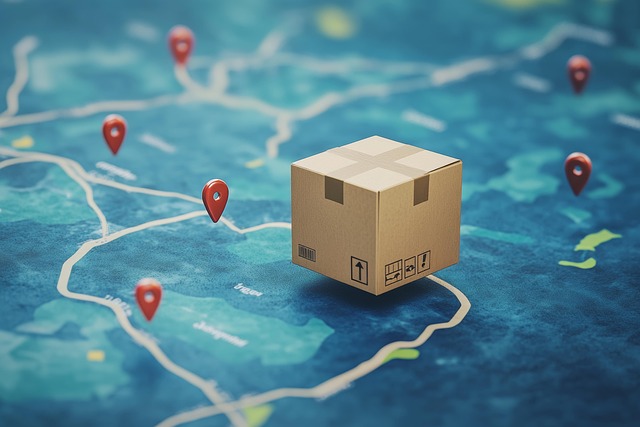How to Calculate and Optimize Your FBA Head Shipping Costs | Money-Saving Guide
Managing FBA head shipping costs requires more than comparing freight rates. It involves understanding the complete cost structure and implementing strategic optimizations. Here’s how to accurately calculate and systematically reduce your shipping expenses.
The Complete FBA Cost Calculation Framework
Direct Transportation Costs
Ocean/Air Freight: Base transportation charges
Fuel Surcharges: BAF for sea, FSC for air (typically 15-30% of base freight)
Security Fees: Carrier security charges ($10-25 per shipment)
Currency Adjustment: Exchange rate fluctuations impact
Fixed Operational Costs
Customs Clearance: Brokerage fees ($150-300 per shipment)
Documentation: Bill of lading, certificate of origin ($50-120)
ISF Filing: Importer Security Filing ($35-75)
Import Bonds: Continuous or single entry ($250-800 annually)
Variable Handling Costs
Origin Charges: Terminal handling, loading ($100-250)
Destination Charges: Port fees, unloading ($200-400)
Drayage: Port to warehouse transportation ($150-600)
Special Handling: Oversized, fragile, or regulated items
Regional Cost Optimization Strategies
Shenzhen Nanshan – Electronics & High-Value Goods
Primary Route: SZX → LAX/ORD → Amazon FCs
Optimal Method: Air consolidation for speed, Sea LCL for volume
Cost Range: $6.50-9.50/kg (air), $110-160/CBM (sea)
Specific Savings:
Consolidate with other electronics shippers
Use ESD-safe shared containers
Pre-clear high-value items to reduce delays
Dongguan – Consumer Products & Home Goods
Primary Route: Yantian → Long Beach → ONT8/LGB8
Optimal Method: Sea LCL for steady sellers, FCL for volume
Cost Range: $95-140/CBM (LCL), $2,700-3,500/40ft (FCL)
Specific Savings:
Optimize carton dimensions to maximize container space
Use standardized pallet sizes (48″x40″)
Schedule shipments during non-peak seasons
Bao’an – Small Electronics & Accessories
Primary Route: SZX → Major hubs → Regional FCs
Optimal Method: Hybrid sea-air for balance, express for urgency
Cost Range: $7-11/kg (air), $105-155/CBM (sea)
Specific Savings:
Implement packaging optimization programs
Use dimensional weight calculators before shipping
Consolidate multiple SKUs in single shipments
Practical Cost Reduction Methods
Packaging Optimization
Right-Sizing: Match box size to product dimensions
Material Selection: Use lightweight but protective materials
Stacking Efficiency: Design packages for optimal container space utilization
Weight Distribution: Balance packages to avoid overweight surcharges
Implementation Steps:
Conduct packaging audit for all SKUs
Test different packaging configurations
Measure dimensional weight impact
Implement changes with quality control
Shipping Strategy Optimization
Consolidation: Combine shipments with complementary products
Timing: Avoid peak season surcharges (Q4, Chinese holidays)
Routing: Select cost-effective port pairs and carriers
Volume Commitment: Negotiate rates based on annual volume
Implementation Steps:
Analyze shipping patterns and volumes
Identify consolidation opportunities
Develop relationships with reliable carriers
Monitor performance and adjust regularly
Hidden Cost Identification & Management
Common Hidden Charges
Demurrage: Container detention at ports ($150-300/day)
Detention: Late container return ($75-200/day)
Re-stuffing: Customs examination repacking ($200-500)
Rejection Fees: Amazon refusal charges ($400-800)
Prevention Strategies
Documentation Accuracy: Ensure perfect paperwork match
Scheduling Buffer: Build in time cushions for delays
Carrier Vetting: Choose reliable partners with good track records
Insurance Coverage: Appropriate coverage for your risk level

Cost Calculation Worksheet
Direct Costs
Base Freight: _________
Fuel Surcharge: _________
Security Fees: _________
Terminal Charges: _________
Indirect Costs
Customs Brokerage: _________
Documentation: _________
Insurance: _________
Contingency: _________
Total Landed Cost per Unit
Total Shipping Cost: _________
Number of Units: _________
Cost per Unit: _________
Implementation Roadmap
Phase 1: Baseline Assessment (Week 1-2)
Document current shipping patterns and costs
Identify highest cost components
Benchmark against industry standards
Set specific reduction targets
Phase 2: Optimization Implementation (Week 3-8)
Implement packaging improvements
Negotiate new carrier agreements
Establish consolidation programs
Train team on cost management
Phase 3: Continuous Improvement (Ongoing)
Monitor key cost metrics
Regular supplier performance reviews
Quarterly cost analysis and adjustment
Stay updated on market rate changes
Key Performance Indicators
Cost Metrics
Cost per KG/CBM by shipping method
Total landed cost per unit
Cost variance from budget
Hidden cost percentage
Efficiency Metrics
Container utilization rate
On-time delivery performance
Damage and claim rates
Customs clearance time
Actionable Cost-Saving Checklist
Conduct complete packaging audit
Analyze dimensional weight calculations
Review carrier contracts and performance
Implement shipment consolidation program
Establish regular cost review process
Train team on hidden cost prevention
Set up cost tracking and reporting system
Develop relationships with multiple carriers
Create seasonal shipping calendar
Implement continuous improvement process
Sustainable Cost Management
Reducing FBA head shipping costs is an ongoing process that requires systematic approach and regular review. By implementing these strategies consistently, most businesses can achieve 15-30% cost reduction while maintaining or improving service levels.
Need professional help optimizing your FBA costs? We provide:
Comprehensive cost analysis
Customized optimization strategies
Ongoing performance monitoring
Get your free cost assessment – Share your current shipping patterns and receive specific recommendations to reduce your FBA head shipping costs within 30 days.
Related Posts
Overseas Warehouse Fulfillment: Complete Guide for E-commerce Sellers
Overseas Warehouse Fulfillment: Complete Guide for E-commerce Sellers How Overseas…
How to Choose Between EXW, FOB and DDP Shipping Terms
How to Choose Between EXW, FOB and DDP Shipping Terms…
The Ultimate Guide to Choosing an International Freight Forwarder
The Ultimate Guide to Choosing an International Freight Forwarder In…

